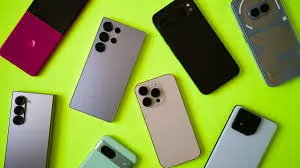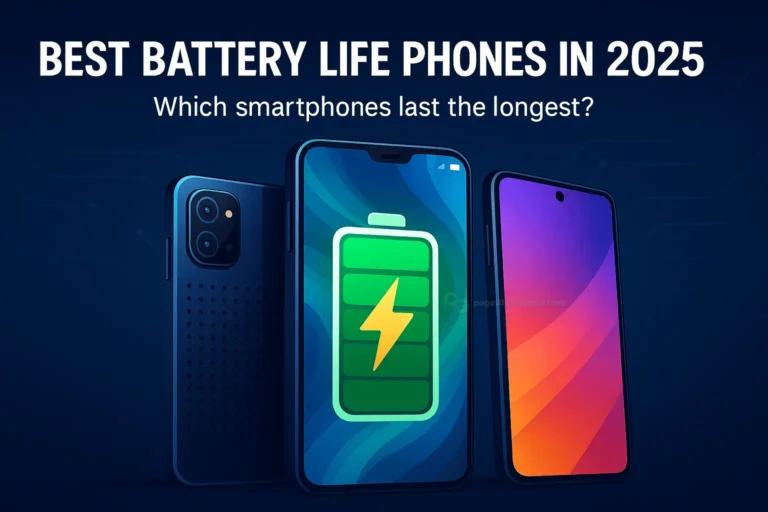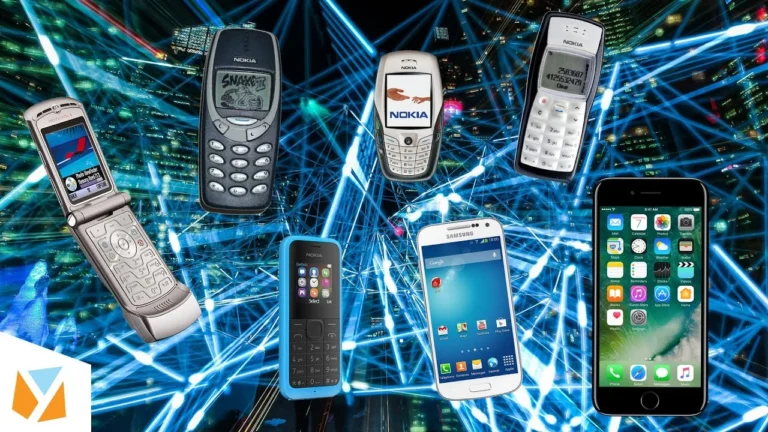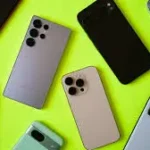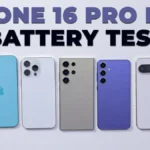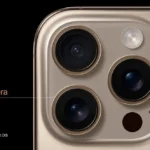
Last Updated on June 24, 2025 by Umair Ahmed
In 2025, smartphones are no longer just communication devices—they’ve become powerful tools for photography enthusiasts, content creators, and everyday users who want DSLR-level shots without the bulk. With every major smartphone brand now focused on camera advancements, finding the best smartphone for photography in 2025 requires more than checking megapixels. It’s about sensor size, AI enhancement, lens versatility, and real-world image quality.In this blog, we dive deep into the top photography phones of 2025 and help you understand what makes them the best in their class. Whether you’re a traveler, vlogger, social media creator, or casual user who wants the sharpest shot, we’ve got you covered.
Why Smartphone Photography Matters in 2025
Smartphones have revolutionized photography. With mobile-first platforms like Instagram, TikTok, and YouTube Shorts dominating visual content, a good camera phone isn’t optional—it’s essential. In 2025, users aren’t just searching for “best camera phone” but for phones that can:
- Shoot cinematic 4K or 8K videos
- Capture crisp low-light shots
- Produce DSLR-like bokeh (background blur)
- Offer professional manual controls
This guide is semantically crafted to address all of these concerns by focusing on real-world user intent, not just keyword stuffing.
Top 5 Best Smartphones for Photography in 2025
We evaluated these phones based on camera hardware, AI software, low-light performance, video recording, and overall versatility.
1. Samsung Galaxy S25 Ultra
Best Overall for Versatile Mobile Photography
- Main Camera: 200MP ISOCELL HP2 sensor
- Zoom: Dual telephoto (3x & 10x optical)
- AI: Smart Scene Optimizer + Nightography 3.0
- Video: 8K at 30fps, Pro Mode video
Samsung’s S25 Ultra continues its reign with unmatched zoom capabilities, a super-detailed primary sensor, and ultra-smooth stabilization. The new image processor improves low-light clarity while preserving natural skin tones.
Why it’s best: Great for all-around use—portraits, landscapes, zoom, and vlogging.
2. Apple iPhone 16 Pro Max
Best for Natural Colors & Video Recording
- Main Camera: 48MP Quad-Pixel
- Zoom: 5x telephoto
- AI: Smart HDR 6 + Photonic Engine
- Video: ProRes 4K 60fps, Cinematic Mode
Apple focuses on true-to-life skin tones, smooth transitions in dynamic range, and unmatched video quality. The Photonic Engine enhances low-light photography significantly, especially in portraits.
Why it’s best: Ideal for filmmakers, influencers, and color-purists.
3. Google Pixel 9 Pro
Best for Computational Photography
- Main Camera: 50MP Octa PD
- Zoom: 5x telephoto with Super Res Zoom
- AI: Magic Editor, Real Tone, Night Sight 2.0
- Video: 4K at 60fps
Pixel 9 Pro leads in AI-driven photography. Google’s software enhances facial expressions, optimizes lighting post-shot, and even removes distractions with Magic Eraser. It’s unbeatable for point-and-shoot ease.
Why it’s best: Best AI enhancements, perfect for casual and candid photography.
4. Xiaomi 15 Ultra
Best for Pro-Level Manual Control
- Main Camera: 1-inch 50MP Sony LYT-900 sensor
- Zoom: 3.2x & 5x telephoto
- AI: Leica tuning with manual video modes
- Video: 8K at 30fps with Dolby Vision
Xiaomi’s partnership with Leica delivers stunning clarity, depth, and filmic tone. If you’re a camera enthusiast who loves adjusting ISO, shutter speed, and white balance manually, this is your pick.
Why it’s best: DSLR-style control in your pocket.
5. Sony Xperia 1 VI
Best for Content Creators and Cinematographers
- Main Camera: Triple 48MP Exmor sensors
- Zoom: Continuous zoom (85mm–170mm equivalent)
- AI: Eye AF, Object Tracking, Cinematography Pro
- Video: 4K HDR 120fps
Sony brings Alpha camera features to smartphones. It’s the dream device for vloggers, filmmakers, and mobile journalists who want cinematic footage, autofocus precision, and pro-grade editing tools.
Why it’s best: Pure manual control + cinematic excellence.
What Makes a Smartphone Camera Great?
Semantic SEO means we must not only list top phones, but explain the why—the contextual attributes that truly satisfy user intent.
Here’s what to look for in a 2025 smartphone camera:
- Sensor Size: Larger sensors = better light capture = clearer low-light images.
- Aperture: Wider aperture (f/1.6 or lower) lets in more light.
- Image Processing: AI and ISP (Image Signal Processor) now play a huge role in photo quality.
- Zoom Capabilities: Optical zoom is key—avoid relying only on digital zoom.
- Video Stabilization: Essential for handheld shooting—look for OIS + EIS.
- Color Science: Each brand renders colors differently. Some prefer realism (Pixel, iPhone), others go for pop (Samsung, Xiaomi).
Semantic Insight Choosing Based on User Intent
Some users want to shoot night portraits. Others want a zoom lens for wildlife. Some prioritize video vlogging. That’s why no single “best camera phone” fits all. Semantic SEO helps align your content with search intent by providing clarity, comparisons, and alternatives.
For Low Light Photography
→ Pixel 9 Pro or Xiaomi 15 Ultra
For Video Content Creators
→ iPhone 16 Pro Max or Sony Xperia 1 VI
For Zoom Photography
→ Galaxy S25 Ultra
Comparison Table Camera Specs at a Glance
| Phone | Main Sensor | Optical Zoom | AI Features | Video Quality |
|---|---|---|---|---|
| Galaxy S25 Ultra | 200MP | 10x + 3x | Nightography 3.0 | 8K @ 30fps |
| iPhone 16 Pro Max | 48MP | 5x | Smart HDR 6 | ProRes 4K |
| Pixel 9 Pro | 50MP | 5x | Magic Editor | 4K @ 60fps |
| Xiaomi 15 Ultra | 50MP (1″) | 3.2x + 5x | Leica AI | 8K + Dolby Vision |
| Sony Xperia 1 VI | 48MP x3 | Continuous zoom | Eye AF | 4K HDR 120fps |
Final Recommendation: Which One Should You Buy?
Still unsure which one to pick? Here’s a simplified suggestion:
- For all-around excellence: Galaxy S25 Ultra
- For creators who love editing videos: iPhone 16 Pro Max
- For people who love AI-enhanced photos: Pixel 9 Pro
- For techies and pros: Xiaomi 15 Ultra
- For cinematic storytellers: Sony Xperia 1 VI
Bonus Tip Don’t Just Chase Megapixels
A 200MP sensor doesn’t guarantee better photos than a 48MP one. Image processing, lens quality, and stabilization matter far more. Semantic content like this helps demystify such marketing terms, ensuring you choose what works, not just what sounds big.
Final Thoughts
The best smartphone for photography in 2025 is the one that matches your unique shooting needs. Whether you’re capturing moments for social media or shooting short films, smartphones have evolved to handle it all.

